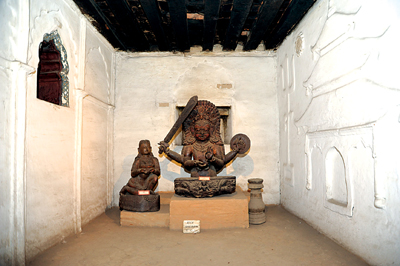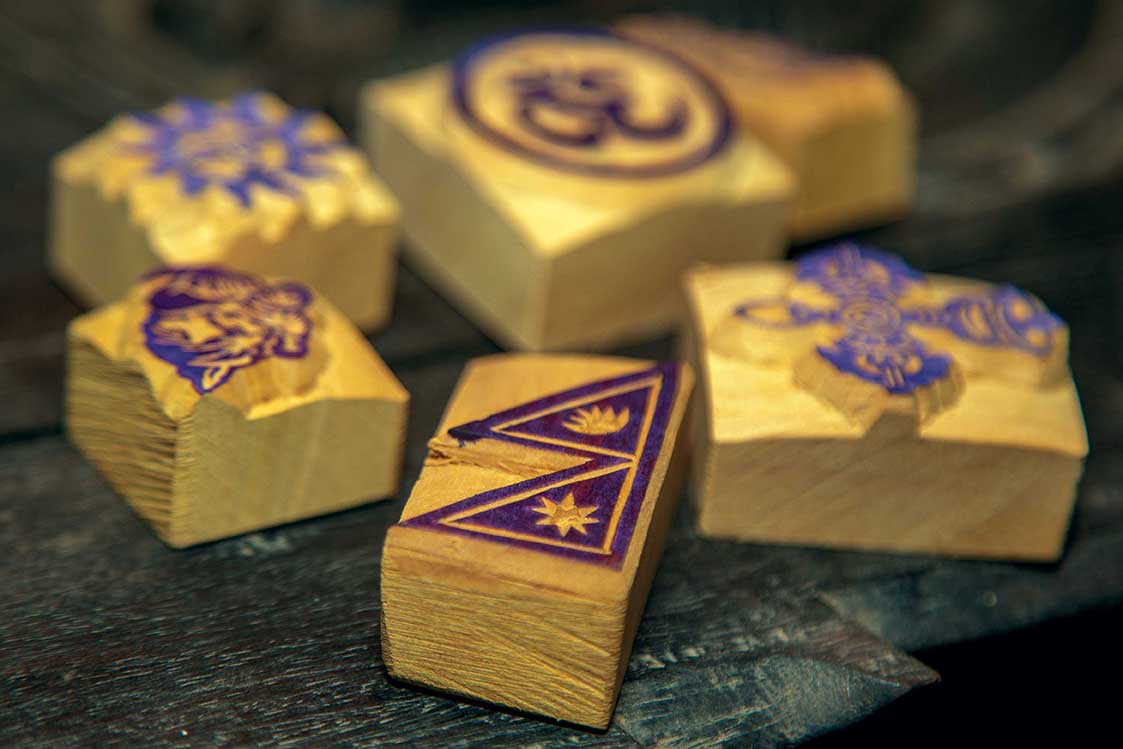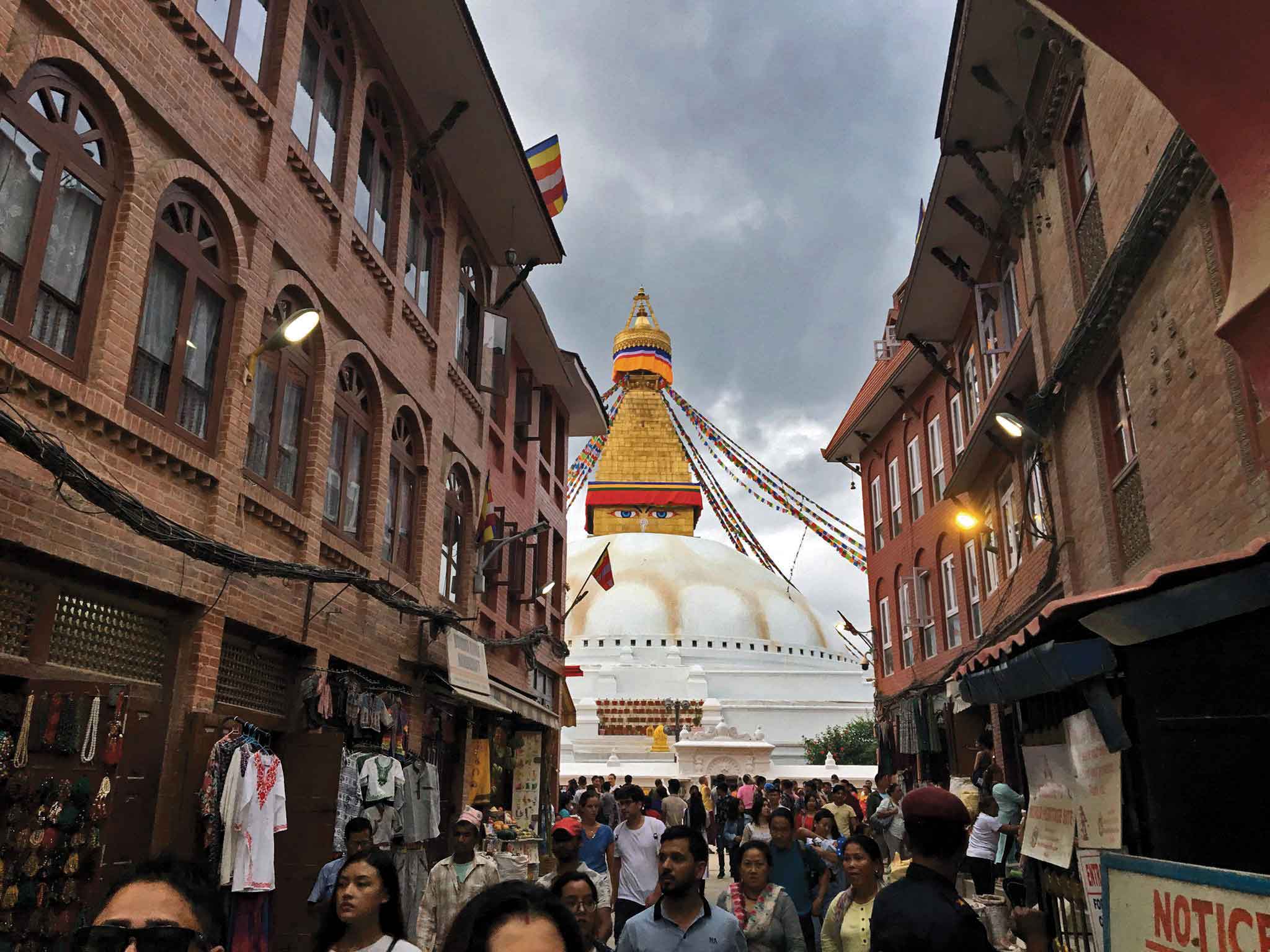Amidst the ancient temples in the historic city of Bhaktapur, an unassuming building holds the key to a passage that showcases an astonishing body of art.
Bhaktapur a world set apart from the valley and country. A place where little has changed since early times, where men still sit under promenades, playing chess, while others carry loads. A repetitive and muffled sound: tunk, tunk tunk… reverbevates. The sound of crafts, brought to life.
 This hidden Newar kingdom of old is one of the most famous places in all the land(s) for craftsmanship: Paubha painting, metal works, stone-carving and wood-work. The temples of its royal square, have stood here for more than 500 years, since the reign of the Malla Kings, they are a testament to the skill of the workers and works that this city produced.
This hidden Newar kingdom of old is one of the most famous places in all the land(s) for craftsmanship: Paubha painting, metal works, stone-carving and wood-work. The temples of its royal square, have stood here for more than 500 years, since the reign of the Malla Kings, they are a testament to the skill of the workers and works that this city produced.
The Wood Carving Museum, run as a National Art Gallery is a place to see the ancient skill of woodcarving, up close. This former home of Mahants, or temple priests, houses some impressive pieces of religious arts, ranging from 18th to 15th centuries, B.C. Even the building itself, is part of the museum’s display. Built over 500 years ago, the building is spread out over four floors, made from mud bricks, and deep black Sal wood, aged gracefully with time, built around a small courtyard and fitted with intricate wooden windows. The displays of the museum are kept on the top floor.
A bright wide-open room greets you on-top, with a low ceiling that makes those who are tall stoop heads perhaps in reverence. There is a selection of intricate wood works on display, most notably: the Cosmic Shiva (18th Century), decked with a countless number of heads, round-bellied and fierce. Also on display is the elegantly shaped Nartaki Devi, a dancing goddess, in a glass box and at the other side the Mar Vijaya, of the 15th Century, a wall hung carving, depicting Lord Buddha in deep meditation, with a pantheon of gods and demons surrounding him.
As was the way with most Newar homes of the day, the top floor houses a puja-ghar or ritual room. In the museum is a small, well-designed room, which you must stoop to enter. A large statue of the fierce god Bhairava, of 17th Century, another aspect of Shiva, held dearly in Newari culture is housed inside. His beard and face are still noticeably red, from all the tikka powder applied through the ages.
The walls of the puja-ghar are also of note. There is a raised plastered stencil on the wall outlining a temple, a trident (Shiva’s weapon) and a daramu (cosmic drum). Three small triangular shaped alcoves are built into the walls, in the back of which are finely detailed and vivid paintings, also from the 17th century of Sri Dattatreya (the founding guru of Sanyasis), Uma Maheshwor (Shiva/Parvati) and Lord Vishnu. Even today, the vivid colours still make the images jump-out.
At the back of the top floor is a fine display of struts, used to support roofs, intricately detailed with images of Lord Buddha or Vishnu. Many show the ravages of time, damaged by elements before rescue. Also notable in this room are the Manjushree statues and the dancing, elephant-headed Ganesha.
In olden times, and even today, it was customary for people of the Silpakar clan to be the woodcarvers, it is amazing to see the quality of work that was possible 500 years ago. It is a testament to the country of what went before. So next time you find yourself in Dattatreya Square, Bhaktapur, at a loose end, go check out the past.
Pat Kauba is a freelance writer and photographer, respecting the skills of before. He can be contacted at patkauba@gmail.com.










